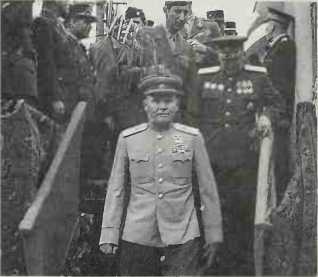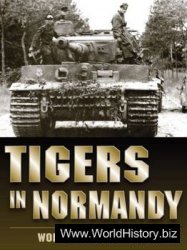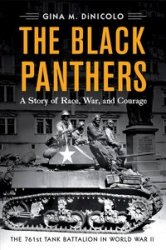Ployed for a surprise torpedo attack, but the Japanese, warned by radar detector equipment, launched torpedoes first. Leander was badly damaged; and although radar-controlled fire from US cruisers destroyed Jintsu, five US destroyers lost radar contact and left the action. Four Japanese destroyers retired under cover of a squall, reloaded their torpedo tubes and attacked once more. Ainsworth, fearing the approaching ships were his errant destroyers, held fire: the Japanese salvoes damaged cruisers St Louis and Honolulu and sank destroyer Gwin. The transports unloaded safely at Kolombangara. RO’N.
Kolubara river, Battle of the see
SERBIAN CAMPAIGN.
Komandorksi Islands, Battle of
The (March 26 1943). Notable as the only “traditional” daylight gunnery action (aircraft and submarines playing no part) of the Pacific War. Having made radar contact west of Attu, Aleutians, a US force (heavy cruiser Salt Lake City, one light cruiser and four destroyers) under Rear Adm Charles H McMorris intercepted at 0800 hours Vice Adm Hoshiro Hosagaya’s superior force of two heavy cruisers, two light cruisers and four destroyers, escorting two large transports to reinforce Attu. In a gun duel opening at 20,000yd (18,300m), both Salt Lake City and the Japanese heavy cruiser Nachi were severely damaged. Failing with long-range torpedo attacks, Hosagaya attempted to close the range; McMorris, taking highspeed evasive action, ordered three destroyers to threaten a suicidal “charge”. Thus harassed, low on ammunition, and fearing the intervention of US land-based aircraft, Hosagaya retreated with his mission unaccomplished. RO’N.
Komer, Robert W (b. l922). US. In May 1967 President Johnson appointed Komer civilian deputy to the commander of the US Military Assistance Command, Vietnam, in charge of pacification. Komer organized the Civil Operations and Revolutionary Development Support (cords) programme. He strongly advocated giving greater emphasis to political and economic development programmes in the belief that the war was essentially a contest for the loyalty of the South Vietnamese people, which had to be won mainly by non-military means. He also inaugurated the Accelerated Pacification and Phoenix programmes.
Komorowski see bor-komurowski.
Komura, Rear Adm Keizo
(b. l896). Jap. Commanded heavy cruiser Chikuma at Pearl Harbor, Midway and Santa Cruz. Ozawa’s cos at Battle of Philippine Sea, June 1944, and led 1st Carrier Division at Leyte Gulf, October
1944. In April 1945, commanding Destroyer Squadron 2, survived sinking of his flagship, light cruiser Yahagi, when escorting “death-ride” of battleship Yamato.
Kondo, Adm Nobutake (18861953). Jap. Commanded 2nd Fleet
1941—43, covering invasions of Malaya, Philippines and Dutch East Indies, and attempted taking of Midway. Kondo commanded Forces at the battles of the Eastern Solomons, Santa Cruz and Guadalcanal. In 1945, he was appointed to the Supreme War Council.
Kongfo-class. Japanese battlecruiser (reclassed fast battleships following reconstructions, 192930s): Kongo, Haruna, Hiei,
Kirishima; launched 1912—13,
32,000 tons standard (reconstructed); 8 X 14in guns. Kongo last Japanese capital ship build abroad (Britain); participated Malaya operations, Midway, Guadalcanal operations, Phillip-pine Sea, Leyte Gulf; sunk by US submarine off Formosa, November 21 1944. Haruna’s service mainly as Kongo', sunk by US aircraft while moored at Kure, July 27
1945. Kirishima participated Pearl Harbor, Darwin, Midway; scuttled after severe damage off Guadalcanal {Hiei sunk in same battle), November 1942.
Koniev, Marshal Ivan (18971973). Russian. Koniev was conscripted into the Imperial Russian Army in 1916 and saw active service in Galicia. An early convert to communism, he acted as a military commissar during the Civil War and participated in the suppression of the Kronstadt naval mutiny of 1921. In 1924 the political side of Koniev’s career diminished and he transferred to the regular officer corps. By 1937 he was in command of a corps. His role at Nomonhan, 1939, was overshadowed by Zhukov’s triumphs, but he survived Stalin’s purges to take command of the North Caucasus Military District in January
1941. By July he was leading Nineteenth Army in the fighting around Smolensk and in September was rewarded with command of the Western Front. But his failure to check the German advance led

Koniev survived Stalin’s pre-war purges
To his being replaced by Zhukov on October 10 and a transfer to the newly created Kalinin Front. Although he performed well in the defence of Moscow, his operations against the German salient around Rzhev were unrewarding. Nevertheless, in summer 1943 he was given command of the Steppe (later 2nd Ukrainian) Front. Thereafter, Koniev played a major role in most of the Red Army’s victories. After the war he held many senior positions with Soviet and Warsaw Pact forces. MS.
Kontum. Kontum province in South Vietnam’s central highlands was one of four “fronts” attacked by communist forces during the Easter offensive of 1972. On April 24 the People’s Army of Vietnam (pavn) 320th and 2nd Divisions overran Dak To, threatening Kontum city, the province capital of about 35,000 people. The Army of the Republic (arvn) 22nd and 23rd Divisions, supported by American tactical aircraft and B-52 strikes, withstood the pavn’s assault in late May. The arvn abandoned Kontum in March 1975 as part of the general retreat from the highlands ordered by President Nguyen Van Thieu.





 World History
World History









